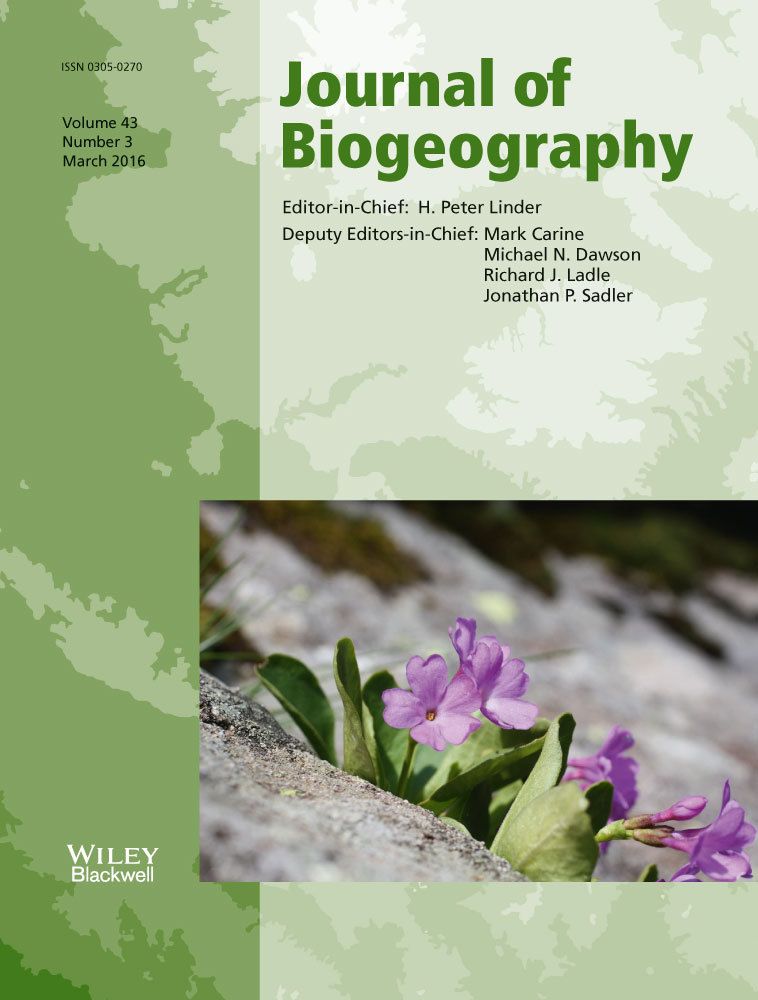Dispersal routes between biodiversity hotspots in Asia: the case of the mountain genus Tripterospermum (Gentianinae, Gentianaceae) and its close relatives
Editor: L. N. Gillman
Abstract
Aim
We investigated the biogeography of the subtropical mountain genus Tripterospermum Blume (Gentianaceae), disjunctly distributed at the southern fringe of the Qinghai–Tibetan Plateau (QTP) and other mountain systems within the biodiversity hotspots of Southeast Asia. This study reveals dispersal routes among these areas.
Location
East China, Indochina, Japan, the Philippines, southeastern fringe of the Qinghai–Tibetan Plateau (southern Himalaya and Hengduanshan), Taiwan, Wallacea.
Methods
The evolutionary history of Tripterospermum was studied using the phylogenetic reconstructions (Maximum Likelihood and Bayesian Inference using ITS, atpB–rbcL and trnL–trnF), molecular dating (using BEAST with a relaxed clock model and fossil constraints), and two approaches of ancestral area reconstructions (DEC, S-DIVA). Our sampling design included 82% of the extant species of subtropical Gentianinae (Tripterospermum, Metagentiana, Sinogentiana and Crawfurdia) as ingroup, and Kuepferia, Gentiana and other Gentianaceae genera as outgroups.
Results
Subtropical Gentianinae originated at the southeastern fringe of the QTP (the southern Himalaya and Hengduanshan) between 16 and 35 million years ago (Ma). With a crown age estimated to be 2.7–8.8 million years (Myr), Tripterospermum originated at the southeastern fringe of the QTP, from where it dispersed to East China, Indochina, Sundaland, Taiwan, Japan and Wallacea.
Main conclusions
For Tripterospermum, the southern Himalaya and the Hengduanshan have acted as a source area for the colonization of East and Southeast Asia. This study depicts dispersal routes among the biodiversity hotspots neighbouring the QTP and those located on Sundaland and Wallacea. Mountain plants seem to have colonized Wallacea using a northern route via Taiwan rather than a more southern route via Sundaland. The latter route has previously been recorded for many lowland lineages. Because Tripterospermum species-producing berries have dispersed more often across geographical barriers than those producing capsules, we hypothesize that avian transportation of berry-like fruits might have facilitated their dispersal.




